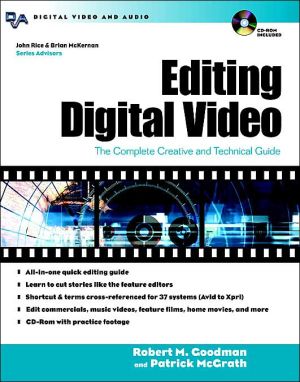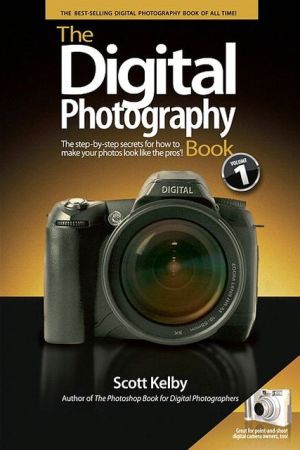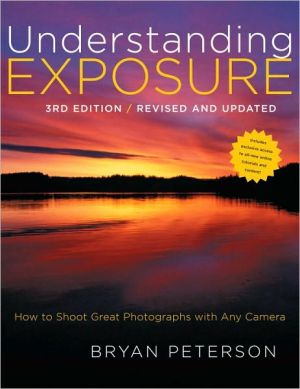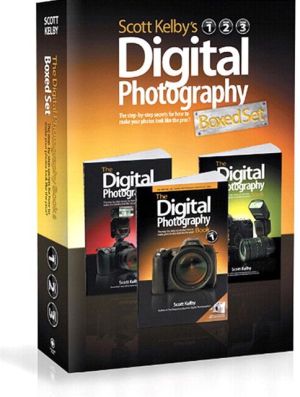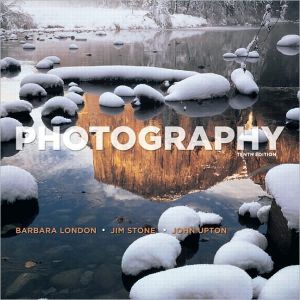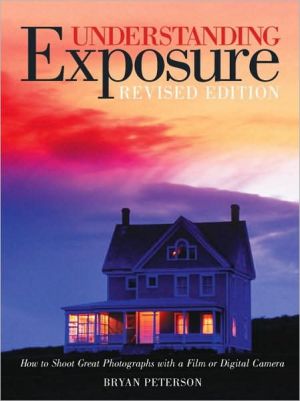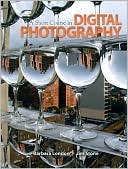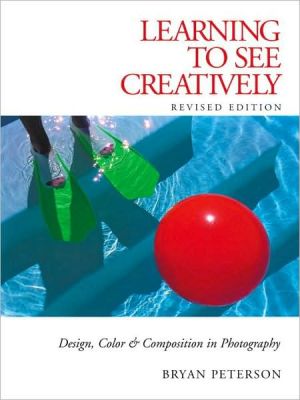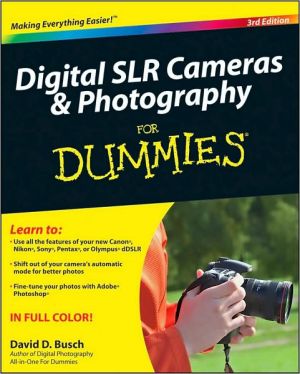Editing Digital Video: The Complete Creative and Technical Guide
Includes CD-ROM with footage you can use to practice editing!\ THE DIGITAL WAY TO CUT VIDEO\ Superb solutions to edit your video. For the amateur, turn your family videos into stories. For the professional, learn to cut your films using the latest digital video tips and tricks.\ A pair of award-winning professionals share their insights. Editing Digital Video explains how to use any tool — from iMovie or Premiere to appliances like Casablanca and Screenplay or professional systems such as...
Search in google:
Includes CD-ROM with footage you can use to practice editing! THE DIGITAL WAY TO CUT VIDEO Superb solutions to edit your video. For the amateur, turn your family videos into stories. For the professional, learn to cut your films using the latest digital video tips and tricks. A pair of award-winning professionals share their insights. Editing Digital Video explains how to use any tool — from iMovie or Premiere to appliances like Casablanca and Screenplay or professional systems such as Avid, Discreet, Media 100 — to turn your imagination into results fast. Quickly acquire the skills you need to: * EDIT COMMERCIALS, DOCUMENTARIES, FEATURE FILMS, AND MUSIC VIDEOS * WORK WITH VIDEO, DVD, AND WEB-BASED MEDIA * TAKE ADVANTAGE OF PROVEN TECHNIQUES FROM THE PROS Anyone from amateurs to students to professionals can learn to edit and tell compelling stories using the results-oriented approach in Editing Digital Video. Plus, a companion CD-ROM with footage and exercises lets you practice on any system. With clear illustrations and a light touch, Editing Digital Video will guide you through the finer points of: * Navigating the desktop * Basic and advanced editing * Creating Impact * Organizing Projects * Keys, mattes, and layering * Titles and Effects * Audio * Digital video formats * Postproduction Workflow * Editing Terminology * Keyboard Shortcuts * And much, much more! With Editing Digital Video, you'll finally unleash your creativity. Learn more in one session than you would from any user manual. A refreshingly realistic approach! The Cut A "complete creative and technical guide" for editing digital video seems like an overly ambitious concept. It is surprising how well the authors manage to accomplish it. The goal of the book, stated in the 2nd paragraph is "to teach anyone, amateurs or professionals, how to edit on any digital video editing system and achieve results." As a first primer -- not superficial but focused on the introductory basics, this book makes a very good attempt in achieving that goal. While I filled the margins with notes on what I thought was left out, or opinions I did not necessarily agree with, I was surprised at the concepts I could not stop thinking about when I finished this book. It will now have a prominent, handy place on my bookshelf -- a treatment that most professional editing books do not get. I know this will make a handy reference and will be re-read more than once. The book comes with a CD-ROM that is compatible with most editing systems, and offers step-by-step instructions using the source material when teaching basic concepts. The first chapter deals with basic concepts and defines editing, describes the hardware and software basics, and the concept of workflow. Oddly, the concept of offlining is not mentioned in describing workflows. This chapter describes why the term "Digital Video Editing" is used throughout the book instead of "Nonlinear Editing" (a distinction which I personally do not agree with) and offers six universal principles of "digital video editing" as part of the definition. The next chapter follows with the basics of today's digital video editing system and examines the GUI desktop design aspects. The authors do a very good job balancing the amount of content and detail for the beginner. Small things I was troubled about was that they left out a reference to SDTI connections while they included SDI and HD-SDI in their discussion on connectivity standards. They also left out pen & tablet when discussing the human interface tools, although I was pleased that they discussed the ergonomics as it related to left-handed editors. Overall, it was a complete and effective lesson. Chapter 3, "Beginnings, Middles and Ends" is my favorite chapter. Not only does it start with teaching editing, but it makes a very good introductory effort to communicate the aesthetic concepts involved with the craft of editing. It starts appropriately with the tradition of storytelling and goes on to discuss different editing workflows (bricklayer vs. sculptor), the concept of the montage, techniques for continuity editing, Pace and Rhythm, and offers "Five Guidelines of Editing". Then the book continues with a focus on polishing the program (trimming and audio -- Chapter 4) and goes on to Chapter 5 "Styles and Workflows" -- another excellent chapter. "Styles and Workflows" starts with the question "What's Technique?", goes on to a training component, and then analyzes different styles and workflows including Music Videos, Commercials (analyzing different types), Documentary and Nonfiction (scripted and non-scripted), and Fiction. I found myself going back and reading this chapter several times. The next chapter focused on media asset management, including ingesting, logging and both project and bin management. This is followed by another lesson in visual grammar (compositional issues, types of shots, point of view, etc.) and goes into aspect ratios and the creation of subclips. Chapter 8 discusses clip effects, color issues, rendering, and timeline effects. Chapter 9 continues by discussing graphics, titling and compositing including the various key types and DVE effects creation issues such as perspective and keyframing. Chapter 10, "Getting It In and Out "is the most technical chapter in the book, and the most uneven. It goes into various ways to set up a picture monitor and yet it never discusses a waveform monitor and uses the word vectorscope just once without explaining it. It does a good job with audio and defining codecs, and does an excellent job with EDLs and its evolution to the AAF metadata standard. The last chapter, Chapter 11, is an excellent cross-reference of editing terminology as used by the various manufacturers and also offers a keyboard shortcut cross reference. This could be worth the cost of the book for freelancers that need to go from system to system and for instructors that have students asking how to do something on their home editor. The book finishes off with a valuable set of appendixes. The first, is "Films to Watch" listing not only the films but scenes to watch for to learn editing techniques, including advanced editing, comedy editing, sound editing and documentary editing. It also lists Eddie Award nominees from 1934 to 2001. Appendix B is a list of "Resources" including magazines, books, and internet resources. (There is no mention of Bob Turner's THE CUT, so it is obviously an incomplete reference!) It ends with an extensive list of manufacturers with descriptions and contact information. Appendix C is a script for the CD-ROM exercise. There were small points I disagreed with and some sections that were not as strong as others, but overall I was amazed at not only how much was covered in a single book, but at how valuable the information was that was provided. With these reservations stated, I recommend this book. I can see it as a text source for video editing instructors, and for anyone that wants to get started in the craft of editing.
Preface Acknowledgments Foreword Chapter 1: The Whole Truth and Nothing But the Truth Chapter 2: What the Heck Is That? Chapter 3: Beginnings, Middles, and Ends Chapter 4: Polishing the Necklace Chapter 5: Styles and Workflows Chapter 6: The China Closet Chapter 7: Setting the Table Chapter 8: The Frosting Chapter 9: Gilding the Lily Chapter 10: Getting It In and Out Chapter 11: What Are They Talking About? Appendix A: Films to Watch Appendix B: Resources Appendix C: Script for Exercise: The Dicey Question by Adam Gooder
\ The CutA "complete creative and technical guide" for editing digital video seems like an overly ambitious concept. It is surprising how well the authors manage to accomplish it. The goal of the book, stated in the 2nd paragraph is "to teach anyone, amateurs or professionals, how to edit on any digital video editing system and achieve results." As a first primer — not superficial but focused on the introductory basics, this book makes a very good attempt in achieving that goal. While I filled the margins with notes on what I thought was left out, or opinions I did not necessarily agree with, I was surprised at the concepts I could not stop thinking about when I finished this book. It will now have a prominent, handy place on my bookshelf — a treatment that most professional editing books do not get. I know this will make a handy reference and will be re-read more than once.The book comes with a CD-ROM that is compatible with most editing systems, and offers step-by-step instructions using the source material when teaching basic concepts. The first chapter deals with basic concepts and defines editing, describes the hardware and software basics, and the concept of workflow. Oddly, the concept of offlining is not mentioned in describing workflows. This chapter describes why the term "Digital Video Editing" is used throughout the book instead of "Nonlinear Editing" (a distinction which I personally do not agree with) and offers six universal principles of "digital video editing" as part of the definition.The next chapter follows with the basics of today's digital video editing system and examines the GUI desktop design aspects. The authors do a very good job balancing the amount of content and detail for the beginner. Small things I was troubled about was that they left out a reference to SDTI connections while they included SDI and HD-SDI in their discussion on connectivity standards. They also left out pen & tablet when discussing the human interface tools, although I was pleased that they discussed the ergonomics as it related to left-handed editors. Overall, it was a complete and effective lesson.Chapter 3, "Beginnings, Middles and Ends" is my favorite chapter. Not only does it start with teaching editing, but it makes a very good introductory effort to communicate the aesthetic concepts involved with the craft of editing. It starts appropriately with the tradition of storytelling and goes on to discuss different editing workflows (bricklayer vs. sculptor), the concept of the montage, techniques for continuity editing, Pace and Rhythm, and offers "Five Guidelines of Editing". Then the book continues with a focus on polishing the program (trimming and audio — Chapter 4) and goes on to Chapter 5 "Styles and Workflows" — another excellent chapter."Styles and Workflows" starts with the question "What's Technique?", goes on to a training component, and then analyzes different styles and workflows including Music Videos, Commercials (analyzing different types), Documentary and Nonfiction (scripted and non-scripted), and Fiction. I found myself going back and reading this chapter several times.The next chapter focused on media asset management, including ingesting, logging and both project and bin management. This is followed by another lesson in visual grammar (compositional issues, types of shots, point of view, etc.) and goes into aspect ratios and the creation of subclips. Chapter 8 discusses clip effects, color issues, rendering, and timeline effects. Chapter 9 continues by discussing graphics, titling and compositing including the various key types and DVE effects creation issues such as perspective and keyframing.Chapter 10, "Getting It In and Out "is the most technical chapter in the book, and the most uneven. It goes into various ways to set up a picture monitor and yet it never discusses a waveform monitor and uses the word vectorscope just once without explaining it. It does a good job with audio and defining codecs, and does an excellent job with EDLs and its evolution to the AAF metadata standard.The last chapter, Chapter 11, is an excellent cross-reference of editing terminology as used by the various manufacturers and also offers a keyboard shortcut cross reference. This could be worth the cost of the book for freelancers that need to go from system to system and for instructors that have students asking how to do something on their home editor.The book finishes off with a valuable set of appendixes. The first, is "Films to Watch" listing not only the films but scenes to watch for to learn editing techniques, including advanced editing, comedy editing, sound editing and documentary editing. It also lists Eddie Award nominees from 1934 to 2001. Appendix B is a list of "Resources" including magazines, books, and internet resources. (There is no mention of Bob Turner's THE CUT, so it is obviously an incomplete reference!) It ends with an extensive list of manufacturers with descriptions and contact information. Appendix C is a script for the CD-ROM exercise.There were small points I disagreed with and some sections that were not as strong as others, but overall I was amazed at not only how much was covered in a single book, but at how valuable the information was that was provided.With these reservations stated, I recommend this book. I can see it as a text source for video editing instructors, and for anyone that wants to get started in the craft of editing.\ \ \ \ \ The CutA "complete creative and technical guide" for editing digital video seems like an overly ambitious concept. It is surprising how well the authors manage to accomplish it. The goal of the book, stated in the 2nd paragraph is "to teach anyone, amateurs or professionals, how to edit on any digital video editing system and achieve results." As a first primer -- not superficial but focused on the introductory basics, this book makes a very good attempt in achieving that goal. While I filled the margins with notes on what I thought was left out, or opinions I did not necessarily agree with, I was surprised at the concepts I could not stop thinking about when I finished this book. It will now have a prominent, handy place on my bookshelf -- a treatment that most professional editing books do not get. I know this will make a handy reference and will be re-read more than once. \ The book comes with a CD-ROM that is compatible with most editing systems, and offers step-by-step instructions using the source material when teaching basic concepts. The first chapter deals with basic concepts and defines editing, describes the hardware and software basics, and the concept of workflow. Oddly, the concept of offlining is not mentioned in describing workflows. This chapter describes why the term "Digital Video Editing" is used throughout the book instead of "Nonlinear Editing" (a distinction which I personally do not agree with) and offers six universal principles of "digital video editing" as part of the definition.\ The next chapter follows with the basics of today's digital video editing system and examines the GUI desktop design aspects. The authors do a very good job balancing the amount of content and detail for the beginner. Small things I was troubled about was that they left out a reference to SDTI connections while they included SDI and HD-SDI in their discussion on connectivity standards. They also left out pen & tablet when discussing the human interface tools, although I was pleased that they discussed the ergonomics as it related to left-handed editors. Overall, it was a complete and effective lesson.\ Chapter 3, "Beginnings, Middles and Ends" is my favorite chapter. Not only does it start with teaching editing, but it makes a very good introductory effort to communicate the aesthetic concepts involved with the craft of editing. It starts appropriately with the tradition of storytelling and goes on to discuss different editing workflows (bricklayer vs. sculptor), the concept of the montage, techniques for continuity editing, Pace and Rhythm, and offers "Five Guidelines of Editing". Then the book continues with a focus on polishing the program (trimming and audio -- Chapter 4) and goes on to Chapter 5 "Styles and Workflows" -- another excellent chapter.\ "Styles and Workflows" starts with the question "What's Technique?", goes on to a training component, and then analyzes different styles and workflows including Music Videos, Commercials (analyzing different types), Documentary and Nonfiction (scripted and non-scripted), and Fiction. I found myself going back and reading this chapter several times.\ The next chapter focused on media asset management, including ingesting, logging and both project and bin management. This is followed by another lesson in visual grammar (compositional issues, types of shots, point of view, etc.) and goes into aspect ratios and the creation of subclips. Chapter 8 discusses clip effects, color issues, rendering, and timeline effects. Chapter 9 continues by discussing graphics, titling and compositing including the various key types and DVE effects creation issues such as perspective and keyframing.\ Chapter 10, "Getting It In and Out "is the most technical chapter in the book, and the most uneven. It goes into various ways to set up a picture monitor and yet it never discusses a waveform monitor and uses the word vectorscope just once without explaining it. It does a good job with audio and defining codecs, and does an excellent job with EDLs and its evolution to the AAF metadata standard.\ The last chapter, Chapter 11, is an excellent cross-reference of editing terminology as used by the various manufacturers and also offers a keyboard shortcut cross reference. This could be worth the cost of the book for freelancers that need to go from system to system and for instructors that have students asking how to do something on their home editor.\ The book finishes off with a valuable set of appendixes. The first, is "Films to Watch" listing not only the films but scenes to watch for to learn editing techniques, including advanced editing, comedy editing, sound editing and documentary editing. It also lists Eddie Award nominees from 1934 to 2001. Appendix B is a list of "Resources" including magazines, books, and internet resources. (There is no mention of Bob Turner's THE CUT, so it is obviously an incomplete reference!) It ends with an extensive list of manufacturers with descriptions and contact information. Appendix C is a script for the CD-ROM exercise.\ There were small points I disagreed with and some sections that were not as strong as others, but overall I was amazed at not only how much was covered in a single book, but at how valuable the information was that was provided.\ With these reservations stated, I recommend this book. I can see it as a text source for video editing instructors, and for anyone that wants to get started in the craft of editing.\ \ \
